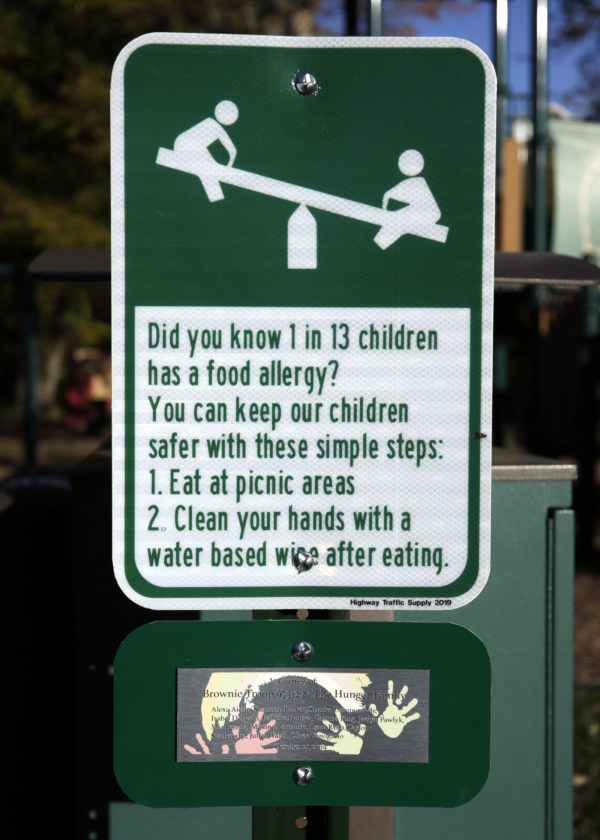
MONTVALE, N.J.—With Mayor Mike Ghassali on hand, Girl Scout Troop 97312 unveiled Montvale’s first Food Allergy Awareness sign, at Huff Park near Memorial Elementary School, on Oct. 21.
Ghassali commended the troop’s effort in helping save lives. The sign, courtesy of the Brownies and the Hunger family, reminds children to eat at picnic tables instead of on the playground equipment and to wash their hands after eating to prevent cross-contamination.
A food allergy is a medical condition in which exposure to a food triggers a harmful immune response called an allergic reaction, which that occurs because the immune system attacks proteins in the food that are normally harmless.
The symptoms of an allergic reaction to food can range from mild (itchy mouth, a few hives) to severe (throat tightening, difficulty breathing).
Anaphylaxis is a serious allergic reaction that is sudden in onset and can cause death.

More than 170 foods are reported to cause allergic reactions. Eight major food allergens—milk, egg, peanut, tree nuts, wheat, soy, fish and crustacean shellfish—are responsible for most of the serious food allergy reactions in the U.S. Allergy to sesame is an emerging concern.
Researchers estimate that 32 million Americans have food allergies, including 5.6 million children under age 18. That’s one in 13 children, or roughly two in every classroom.
The Centers for Disease Control and Prevention reports that the prevalence of food allergy in children increased by 50% between 1997 and 2011.
Between 1997 and 2008, the prevalence of peanut or tree nut allergy appears to have more than tripled in U.S. children.
Food allergy affects an estimated 6% to 8% of children under 3, and up to 3% of adults. While there’s no cure, some children outgrow their food allergy as they get older.
Ghassali promised that more signs will be appearing around town. Memorial Elementary School Principal David Collier also expressed interest in having a few more signs installed on school property as a reminder to keep students safe and prevent cross-contamination.

